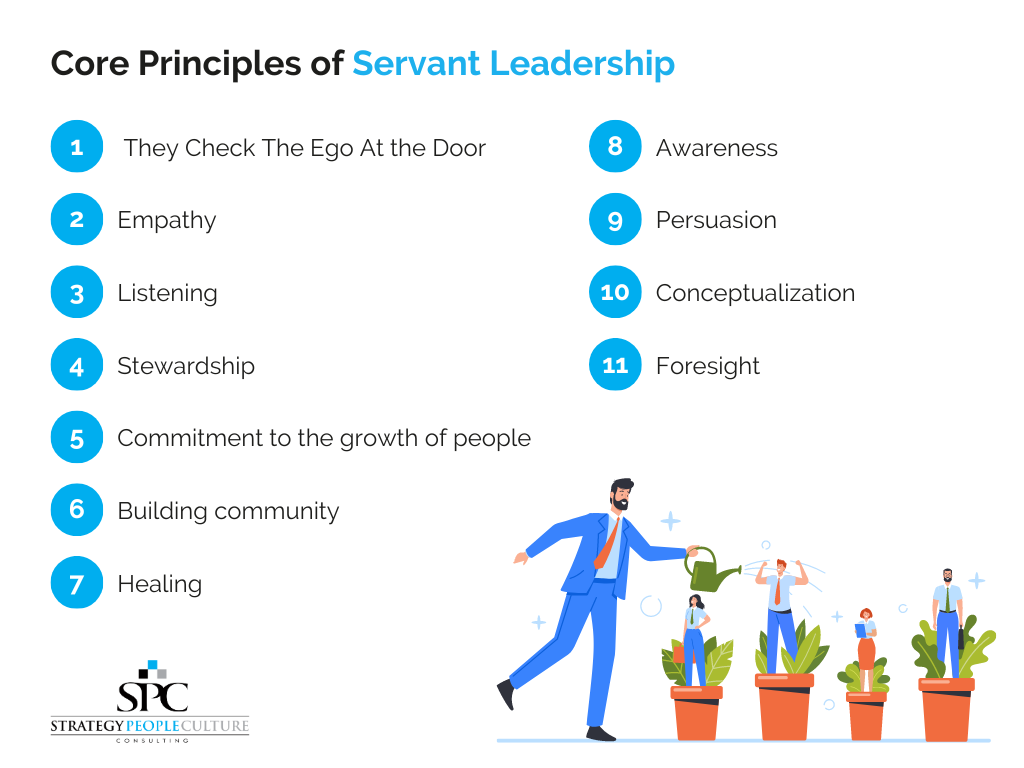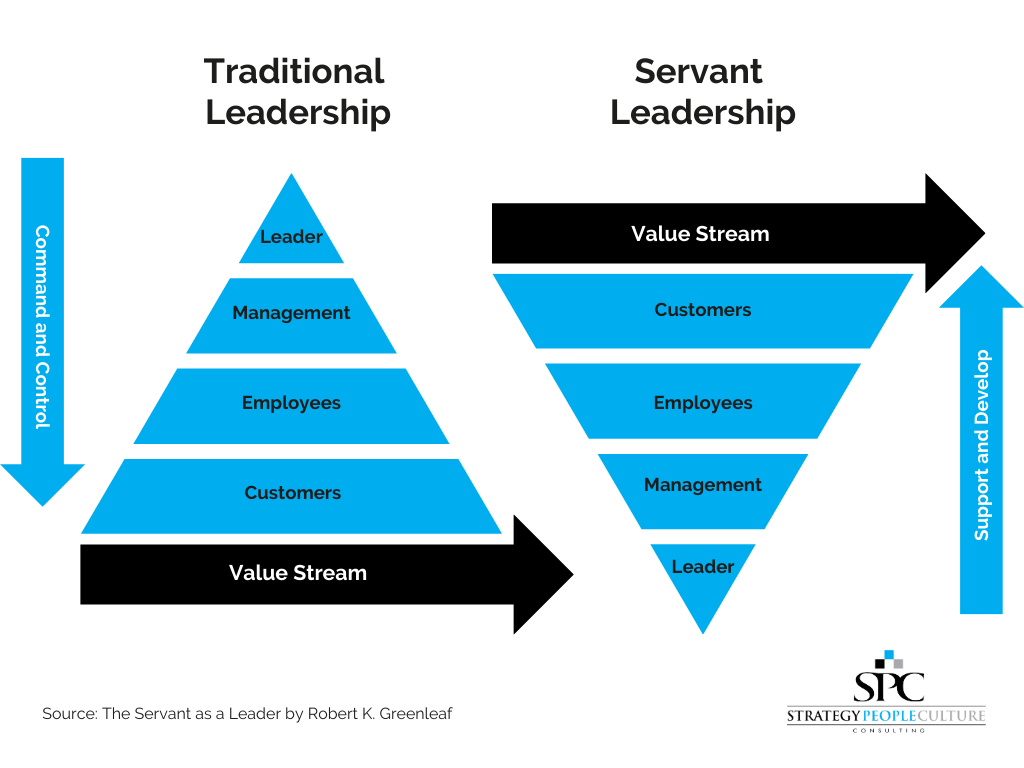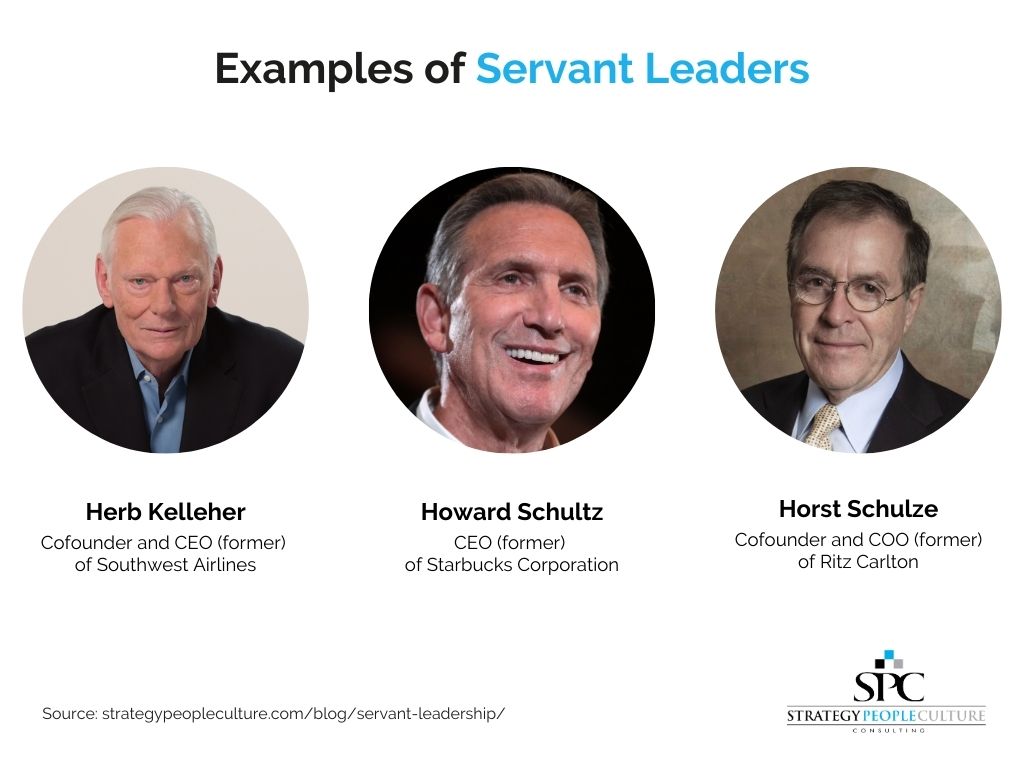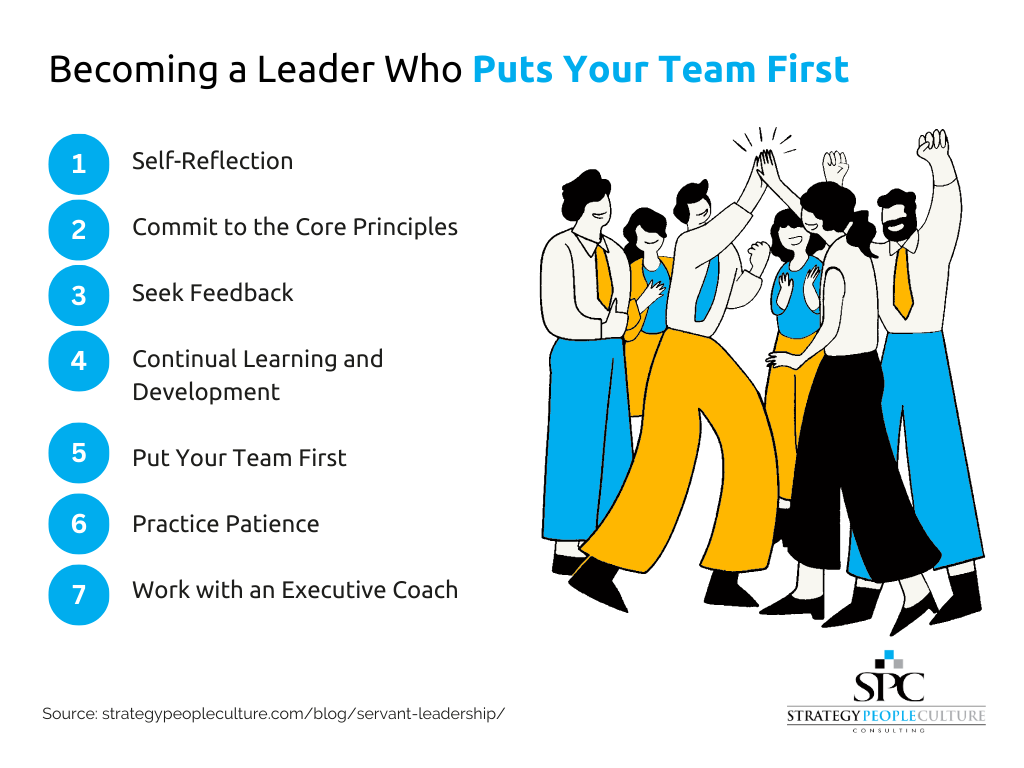Beyond Ego: How Servant Leadership Transforms Teams and Drives Exceptional Results

Is there a better way to approach leadership? Traditional models often focus on a top-down approach, but do they truly harness the full potential of team members? Traditional Leadership approach, while it may have its merits, without careful application, can overemphasize the leader, with all decisions and direction coming from them.
Moreover, these leadership styles can be prone to the pitfalls of ego, often leading to power-centric decision-making, reduced team cohesion, and, ultimately, decreased productivity. But what if there was a leadership approach that could circumvent these shortcomings, one that puts the needs of the team to be more successful before simply satisfying the whims of the leader? That’s where servant leadership comes in.
In this article, we will explore what servant leadership is all about, its principles, and how it can transform teams and drive exceptional results. We will also highlight some real-life examples of organizations and teams that have successfully implemented this approach and achieved outstanding success.
What Hinders Your Team’s Success?

Most leaders may not even realize that their leadership style is limiting the innovative potential of their teams. Traditional leaders, often playing the role of the decision-maker, can inadvertently quell creativity, compromise communication, and disrupt collaboration within their teams by focusing on themselves over what can help make the whole organization more effectively function, as counter-intuitive as that may appear.
Warning signs of an ego-driven leadership style can range from a pronounced resistance to feedback or a tendency to micromanage, to a lack of empathy and understanding towards the team’s concerns or ideas. These traits can create an environment where team members may feel undervalued and unheard, potentially leading to decreased morale, productivity, and ultimately, affecting the overall success of the organization.
To avoid falling into this leadership pitfall, it’s helpful to recognize that the key to successful leadership lies not in dominance but in service. Leaders, even those who tend to lean towards a more autocratic style, would be wise to understand and consider the profound benefits of adopting or implementing some elements of a servant leadership mindset.
What is Servant Leadership?
Servant leadership is a leadership style that prioritizes the growth, wellbeing, and success of the team above everything else. Put simply, it is when the leader makes a core part of their job as figuring out what they can do to help make their employees more successful at their jobs. This approach can stimulate creativity, encourage open communication, and enhance collaboration, leading to exceptional results. A study published at Sage Journals found that teams led by servant leaders showed higher levels of cooperation and were more effective in achieving their goals than those led by non-servant leaders.
Leaders transitioning to this style of leadership shouldn’t hesitate to seek support and training when needed, as the shift from traditional to servant leadership can be a significant paradigm change.
Core Principles of Servant Leadership

At its heart, servant leadership focuses on serving others. It transcends hierarchical authority and emphasizes collaboration, trust, empathy, and the ethical use of power. Here are the core principles that define servant leadership:
1. They Check The Ego At the Door: Servant leaders recognize the day-to-day is not about them. Rather it is about asking the question, “how can I help those around them to be better?”
2. Empathy: Servant leaders strive to understand and empathize with the problems and needs of their team. They prioritize their team’s emotional wellbeing, fostering an environment where everyone feels heard and valued.
3. Listening: Effective communication begins with active listening. Servant leaders pay attention to their team’s feedback, concerns, and suggestions. Research revealed that servant leaders’ emphasis on two-way communication resulted in increased trust and team cohesion.
4. Stewardship: Servant leaders act as stewards who are committed to the growth and development of their team and organization. They consider their role as a responsibility, not a means to exercise power.
5. Commitment to the growth of people: Servant leaders are deeply committed to the growth of each individual within their team. They provide opportunities for career development and continually invest in their team’s personal and professional growth. Some organizations truly do not have job growth opportunities; a lack of job growth opportunities does not mean teams cannot further be developed and feel as if they are growing.
6. Building community: A servant leader fosters a sense of community within the organization, promoting collaborative decision-making and team unity.
7. Healing: Recognizing the personal and professional struggles of team members, servant leaders approach these situations with compassion and initiate healing, fostering a supportive atmosphere within the team.
8. Awareness: Servant leaders possess a keen sense of awareness towards the emotional and physical environment around them. They are cognizant of their team’s needs, sentiments, and the dynamics within the team.
9. Persuasion: Instead of relying on hierarchical authority, servant leaders use persuasion to influence their team. They build consensus within the group, promoting an atmosphere of collaboration and mutual respect.
10. Conceptualization: Servant leaders have the ability to think beyond day-to-day operational realities. They are visionaries who can conceptualize the bigger picture, providing direction and inspiring their team to achieve long-term goals.
11. Foresight: The ability to anticipate future outcomes is a key characteristic of servant leaders. They use lessons from the past, realities of the present, and likely consequences of decisions to guide their actions, ensuring the team’s success in the long run.
By embodying these principles, servant leaders can effectively guide their teams to reach their full potential, encouraging creativity and innovation, and ultimately driving exceptional results.
Servant Leadership vs Other Leadership Styles
While traditional leadership models often place the leader at the top of an organizational hierarchy, servant leadership turns this model on its head. Traditional models, such as autocratic leadership, often focus on the leader’s goals and objectives, with little regard for the needs and concerns of the team. However, servant leaders prioritize the team’s wellbeing, growth, and success over their own way. A simple graphical display can invert the organizational hierarchy conceptual to shift like the below:

For instance, transactional leaders use rewards and punishments to motivate team members, which, if done effectively, may have a benefit, however they can create a climate of fear and discourage creativity or innovation. In contrast, a servant leader seeks to motivate their team by fostering an environment of trust, respect, and mutual growth. They understand that by serving their team and meeting their needs, they can unlock their team’s full potential, leading to increased productivity and remarkable results.
Unlike laissez-faire leadership, where leaders provide little guidance and leave decision-making to the team, servant leaders actively guide their team while also encouraging collaborative decision-making and helping to clear the obstacles in the way of the team’s success. They provide the necessary support and resources, facilitating team members to perform at their best and achieve their goals.
Transformational leaders, though sharing some similarities with servant leaders in inspiring and challenging their team to achieve extraordinary results, primarily focus on organizational goals. On the other hand, servant leaders place a firm focus on people trying to execute those goals, believing that success will follow when team members feel supported, valued, and are growing in their roles.
Nothing in this article should suggest to you there is a singular, absolute answer to effective leadership. Understanding each of these leadership styles, of which servant leadership is not as often discussed in traditional MBA programs and does not come intuitively to people in decision making positions.
Overall, in comparison to other leadership styles, servant leadership goes beyond simply achieving organizational goals. It fosters a positive work culture, enhances employee engagement, and builds a collaborative, respectful, and trust-based team environment.
Pros and Cons of Servant Leadership

Like any leadership theory, servant leadership is not without its pros and cons. Let’s delve into both sides to gain a comprehensive understanding of this leadership style.
Benefits of Servant Leadership
From improved team dynamics to encouraging innovation, servant leadership has many advantages.
- Enhanced Team Collaboration: Servant leadership creates a culture where each member’s input is appreciated, fostering trust and mutual respect, which leads to improved team collaboration.
- Effective Communication: By emphasizing active listening, servant leaders promote open and effective communication within their teams.
- Increased Employee Satisfaction and Engagement: Servant leadership leads to higher job satisfaction and employee engagement, as leaders prioritize their team’s wellbeing and growth over organizational profits.
- Enhanced Innovation and Problem-Solving: Servant leadership encourages an environment where innovative ideas are welcomed and appreciated, thereby promoting creative problem-solving.
Cons of Servant Leadership
Despite its many benefits, servant leadership also presents certain challenges.
- Time-Consuming: The servant leadership approach can be time-consuming. Servant leaders spend a lot of time listening to their team, understanding their needs, and helping them grow, which may delay decision-making and slow down the pace of work.
- Dependence on Leader: Servant leadership may create a dependence on the leader as team members may wait for guidance rather than take the initiative themselves. This could potentially hinder the development of self-reliance and autonomy within the team.
- Difficulty in Measurement: It can be challenging to measure the effectiveness of servant leadership. Success in servant leadership is often gauged by the growth and happiness of the team members, which are qualitative and can be subjective.
- Resistance to Change: Transitioning from traditional leadership to a servant leadership style can be met with resistance from team members who may not understand the concept or are used to a hierarchical leadership style.
Servant Leadership in Action
The power of servant leadership is not just theoretical; numerous organizations and leaders have adopted this approach, reaping significant benefits in the process.

One shining example of servant leadership in action is the renowned multinational technology company, Southwest Airlines. Led by the late Herb Kelleher, Southwest Airlines epitomizes servant leadership principles. Kelleher prioritized the needs of his employees above all else, insisting that happy employees would lead to happy customers. This philosophy was evident in the company’s policies, including profit-sharing plans and empowering employees to go the “extra mile” for customers. The result? Southwest Airlines consistently ranks high in customer service surveys and has maintained profitability even during challenging times in the airline industry.
Another example is the Starbucks Corporation, guided by former CEO Howard Schultz. Schultz’s commitment to his employees (whom he refers to as “partners”) is legendary. Starbucks offers comprehensive health insurance to both full-time and part-time employees, an unheard-of practice in the retail industry. Schultz is known to have said, “We are not in the coffee business serving people, but in the people business serving coffee.” This servant leadership approach has translated into a loyal workforce and a globally successful brand.
Ritz-Carlton President and COO Horst Schulze is a proponent of servant leadership. Despite his high position in the luxury hospitality industry, Schulze prioritizes supporting his team and removing obstacles to enable their best work. His leadership has fostered a culture of excellence and innovation, setting new standards for customer service and experience in the hotel industry.
These examples illustrate the transformative effect of servant leadership. By placing employees’ needs and growth at the forefront, these organizations have cultivated a culture of trust, cooperation, and mutual respect, leading to exceptional team performance and business success. They demonstrate that servant leadership is not just an abstract concept, but a viable and effective leadership approach that can drive outstanding results.
Becoming a Leader Who Puts Your Team First

Embracing servant leadership requires a shift in mindset from traditional leadership styles. Here are some actionable steps to guide you on this journey:
- Self-Reflection: Begin by reflecting on your current leadership style. Identify aspects that align with servant leadership and areas where changes are needed. This self-awareness is instrumental in initiating the transformation.
- Commit to the Core Principles: Strive to embody the core principles of servant leadership—empathy, listening, stewardship, commitment to the growth of people, and building community. Integrate these principles into your daily leadership practices.
- Seek Feedback: Regular feedback from your team can provide valuable insights into how your leadership style is perceived and areas of improvement. Constructive criticism can help you adjust your approach and better serve your team’s needs.
- Continual Learning and Development: Engage in professional development programs that focus on servant leadership. This could involve attending workshops, participating in leadership training programs, or seeking mentorship from successful servant leaders.
- Put Your Team First: Make a conscious effort to prioritize your team’s needs. Whether it’s providing resources, removing obstacles, or supporting professional growth, ensure that your actions reflect the servant leadership ethos.
- Practice Patience: Transitioning to a new leadership style takes time. Be patient with yourself and your team as you navigate this change. Remember, servant leadership is a journey, not a destination.
- Work with an Executive Coach: Working with an executive coach can be immensely helpful in developing your leadership skills. An experienced coach can provide guidance, support, and accountability as you strive to become a leader who puts your team first.
By actively seeking out these opportunities, you can equip yourself with the necessary skills and knowledge to become a successful servant leader.
Conclusion
Servant leadership has proven to be beneficial for both the team and the leader, with its focus on fostering collaboration, enhancing communication, and increasing employee satisfaction. More than a leadership style, it’s a philosophy embedded in the core belief that success is achieved through serving others.
Adopting servant leadership may require a significant shift from traditional leadership mindsets, emphasizing personal growth, commitment to core principles, and a first-and-foremost dedication to the team. The journey may be challenging, but the rewards are well worth it, resulting in a positive work culture, heightened productivity, and shared success.
Consider scheduling an executive coaching session with Strategy People Culture, and let us guide you on your journey toward becoming a leader who truly serves.
